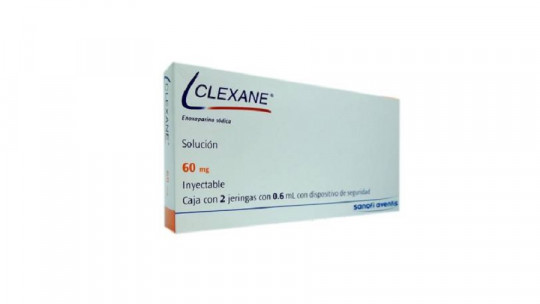
Anti-inflammatory drugs are among the most consumed medications. These medications are used to reduce fever, pain and inflammatory processes, which is why they are so widely consumed, in addition to the fact that they are available over the counter.
We all have ibuprofen, aspirin or even enantyum in our home, drugs that we usually resort to from time to time thanks to their great effectiveness in reducing the discomfort associated with a bad gesture or an infection.
Like all medications, anti-inflammatories pose a series of risks and may have side effects, although in most cases they are very safe. Today we are going to talk about what are the main types of anti-inflammatories and some of its uses.
What are anti-inflammatories?
Anti-inflammatory medications are drugs that, as their name suggests, Their main function is to reduce inflammation in some tissue or organ Inflammations can be due to an infection, immune reactions, injuries or any other process that causes body tissue to become inflamed, all of which are combated through the consumption of anti-inflammatories.
When these drugs are consumed, their active ingredients travel through the bloodstream and their main action is carried out, which is to prevent the body from generating prostaglandins, molecules that are responsible for triggering the body’s inflammatory processes. It is because of these molecules that, when we suffer some type of damage where there is inflammation, our sensitivity to pain increases in that region.
As anti-inflammatories reduce the production of prostaglandins, they reduce inflammatory processes and also make us more resistant to pain for a certain period of time.
For this reason, after taking one of these drugs, our pain and discomfort is reduced, regardless of whether it is in an organ, tissue or in various parts of our body. Basically, what they do is “numb” the pain receptors. Added to this, anti-inflammatories have an antipyretic effect, that is, They reduce body temperature and, therefore, reduce fever when taken
Anti-inflammatories classes
It is considered that there are two large groups of anti-inflammatories.
1. Anti-inflammatory corticosteroids
Corticosteroid anti-inflammatory drugs are drugs whose active ingredient is cortisone or its derivatives Due to their side effects, anti-inflammatories with cortisone can only be prescribed for very specific cases.
Among them we have cortisone itself, dexamethasone, hydrocortisone, sodium phosphate, prednisone and methylprednisolone. Their consumption is not usually common and they are usually prescribed for arthritis and associated discomfort.
2. Non-steroidal anti-inflammatories
Nonsteroidal anti-inflammatory drugs or NSAIDs are drugs whose active ingredients are components that are well known in popular culture such as ibuprofen, dexketoprofen or naproxen.
These drugs are more popular and more prescribed because they are better tolerated. However, you should not be overconfident, since misuse can cause problems in the digestive system, damage the kidneys and increase blood pressure. It is for this reason that, even though they are everyday medications, the instructions given by the pharmacist and doctor must be followed.
3. Are DMARDs a type of anti-inflammatory?
It is worth mentioning that, although they are not considered anti-inflammatory per se, Disease-modifying antirheumatic drugs or DMARDs fall into the category of drugs with anti-inflammatory properties
Among these drugs we find penicillamine, chloroquine and methotrexate, which have the peculiarity that they influence rheumatoid arthritis, as happens with many anti-inflammatories. In this case, these drugs slow the progression of the disease, apparently by modifying the immune system and reducing the pain associated with the disease.
The 10 most common types of anti-inflammatory
Beyond the previous classification, there are different types of anti-inflammatories that vary both in the time they take to take effect in the body and in their potency. The number of side effects they can bring and the potential risks also vary. Below we will see the most common anti-inflammatories and for what ailments they are taken
1. Ibuprofen
Ibuprofen or (RS)-2-(4-isobutylphenyl)propanoic acid is one of the best-known anti-inflammatories, maybe the most. It is highly effective and causes very little damage to the body, which is why it is so widely consumed. In addition to relieving pain, this medication reduces inflammatory processes and lowers fever.
It is indicated for all infections that cause fever, as well as to relieve headaches, reduce menstrual pain, relieve pain after a sports injury, reduce inflammation of the mouth and throat, and reduce the symptoms of arthritis. . Unlike other medications, ibuprofen It has also proven to be useful in relieving the symptoms associated with migraine attacks or episodes
As a precaution and primary indication, it is important to consume it only when any of the symptoms we have mentioned occur and always respecting the maximum dose of 600 mg every 8 hours, although with 400 mg you will already get a lot of relief.
2. Aspirin
Aspirin is also a well-known anti-inflammatory drug worldwide. Its full name is acetylsalicylic acid and It has analgesic, antipyretic and inflammation-relieving properties Although it performs the same functions as ibuprofen, aspirin is commonly used to relieve headaches.
It should be said that this anti-inflammatory has a problem, which is that it has anti-aggregant effects, that is, reduces blood clotting ability Therefore, once this medication has been taken, if you suffer a cut, it is more difficult for the wound to heal.

3. Paracetamol
It may surprise some to add paracetamol to this list. The reason? Well because technically it is not an anti-inflammatory. It does not belong to this group of medications but has the peculiarity that it has similar properties to them.
Paracetamol has analgesic properties and is useful for reducing fever, although it does not reduce inflammation and therefore it cannot be considered an anti-inflammatory.
This drug is recommended to slightly relieve headaches, muscle pain, back pain and reduce fever. However, it cannot be recommended to relieve the inflammation associated with blows, trauma, injuries or arthritis because it does not have an anti-inflammatory effect and therefore does not reduce the pain associated with these injuries.
It has two names in the IUPAC (International Union of Pure and Applied Chemistry): N-(4-hydroxyphenyl) acetamide and N-(4-hydroxyphenyl) etanamide.
4. Celecoxib
Celecoxib or 4-(5-(4-methylphenyl)-3-(trifluoromethyl)pyrazol-1-yl)benzene sulfonamide is an anti-inflammatory that It is used to relieve pain after an injury or trauma It is also used to reduce the symptoms of arthritis and reduce the pain of menstrual periods.
It is important to highlight that this medication is quite recent and, although it has been found to be highly effective and implies a lower risk of suffering from gastrointestinal problems and other side effects typical of NSAIDs, It is a much more expensive treatment compared to other anti-inflammatories such as ibuprofen, paracetamol or aspirin.
5. Enantyum
Enantyum or (2S)-2-(3-(benzoyl)phenyl)propanoic acid, also known as dexketoprofen, is a very powerful anti-inflammatory, so much so that it should not be taken without the supervision of a doctor. Its consumption should be limited to short periods, at most a week. It is used to treat acute pain during quite painful situations, such as the postoperative period or for very serious cases of back pain, muscle pain and serious trauma.
6. Flurbiprofen
Flurbiprofen, also known as Strepfen, Ansaid, Ocufen and with the IUPAC name (±)-2-fluoro-α-methyl-(1,1′-biphenyl)-4-acetic acid, is an anti-inflammatory used to relieve pain, reduce inflammation, lower sensitivity and avoid stiffness associated with arthritis. This drug is not recommended in people who do not have arthritis, nor is it used to relieve other ailments or to reduce fever due to its potential.
7. Naproxen
Naproxen or (S)-2-(6-methoxy-2-naphthyl)propanoic acid serves to reduce fever, has anti-inflammatory properties and analgesic action. This medication is not usually used to treat mild pain or reduce fever, but rather to treat arthritis, osteoarthritis, tendonitis, migraines and bursitis
8. Phenylbutazone
Phenylbutazone (4-butyl-1,2-diphenylpyrazolidine-3,5-dione) It is a very powerful anti-inflammatory, only administered when other drugs have not been helpful and is always used to treat very serious cases of chronic pain, including the symptoms of arthritis.
Its associated problem is the reduction of the levels of red blood cells and white blood cells, which is why we always try to avoid its administration or use it as a last resort in reducing pain.
9. Piroxicam
Piroxicam is a very powerful anti-inflammatory drug used to relieve symptoms of arthritis, sharp and severe menstrual pain, and to reduce pain after surgery surgical. It is also usually administered when there is pain associated with prostate problems. Its IUPAC name is (8E)-8-(hydroxy-(pyridin-2-ylamino)methylidene)- 9-methyl-10,10-dioxo-10λ6-thia-9-azabicyclo(4.4.0) deca-1 ,3,5-trien-7-one
10. Diclofenac
Diclofenac is another anti-inflammatory used to treat arthritis pain and other symptoms, as well as to reduce pain associated with menstrual periods and to treat migraine. It should be said that this medication It does not help prevent migraines or other types of headaches Its systematic name is 2-(2-((2,6-dichlorophenyl)amino)phenyl)acetic acid.
What side effects can they have?
Although many anti-inflammatories are available over the counter, we must not forget that they are drugs, medications that can cause side effects, both random and associated with overdose They are still chemical substances that interact with our body and, despite being so useful, the body can interpret their presence as a toxin to combat.
When ingesting any drug, the instructions must be respected, which indicate the maximum daily dose depending on age, for what ailments they should be taken and other instructions. These medications should never be taken on an empty stomach and the hours between one dose and the next should always be respected. If these instructions are not followed, there is a risk of suffering health problems that, although they are usually mild cases, can become complicated and cause significant damage.
About 20% of people who consume an anti-inflammatory inappropriately (mostly abuse and misuse) can cause stomach problems such as burning, stomach heaviness or abdominal pain. It is common to have digestive and intestinal problems because this type of drugs have the disadvantage that they irritate the epithelium of the digestive system.
The consumption of anti-inflammatories can lead to serious stomach problems. Although this occurs in a fairly small percentage, in only 2% of cases and mostly associated with their abusive use, can cause damage associated with irritation of the digestive tract, including stomach or duodenal ulcers Even serious medical conditions such as internal bleeding can occur.
Taking all this into account, it is very important to make responsible use of anti-inflammatories, in addition to taking the appropriate one for the medical condition suffered and receiving follow-up from a professional. Not all anti-inflammatories are the same, each one has associated risks and, in addition, they must be taken in different quantities depending on the age, the type of patient and the severity of the inflammatory process for which they want to be used.








